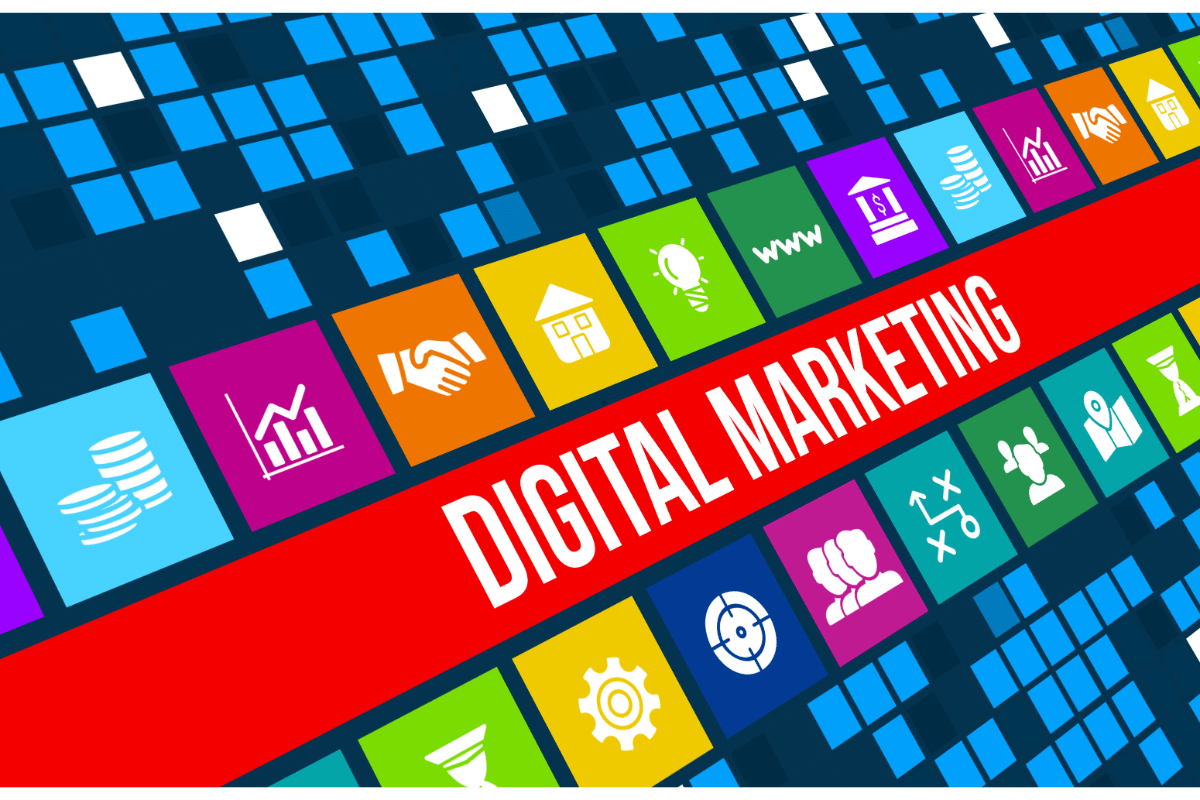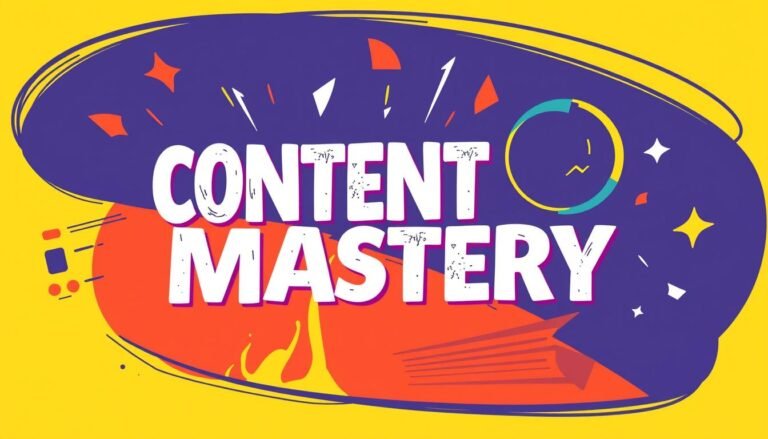From Traditional to Digital: Evolving Marketing Approaches for Success
Digital Marketing Strategies
What’s Digital Marketing All About?
Digital marketing is all about using the internet to promote stuff. It’s like shouting from the rooftops, but online. Businesses use different online tricks to get noticed and connect with people. This is super important for anyone in marketing or running a business. The goal? Get your brand out there, chat with your audience, and make those sales.
There are loads of ways to do digital marketing: social media, emails, blogs, and making sure your website shows up on Google (that’s SEO). Each of these is a piece of the puzzle. Want to know more about the old-school ways? Check out our traditional marketing section.
Why SEO is a Big Deal
SEO, or Search Engine Optimization, is like giving your website a makeover so it looks good to Google. When your site ranks higher, more people find you. It’s like being the popular kid in school. According to Moz, good SEO makes your site trustworthy, user-friendly, and worth the investment.
SEO isn’t just for Google and Bing. It’s also key for social media sites like YouTube and TikTok, where people search for stuff all the time (Digital Marketing Institute).
Check out this traffic breakdown:
| Traffic Source | Percentage of Site Traffic |
|---|---|
| Organic Search | 53% |
| Paid Search | 15% |
See? Most people find sites through organic search. This means SEO should be a top priority. Setting clear SEO goals that match your business aims can really boost your site traffic and make it easier for users to find what they need.
By weaving SEO into your digital marketing game plan, you can reach more folks and back up your other marketing moves. Want more tips? Dive into our sections on social media marketing and email marketing.
Key Parts of Digital Marketing
Grasping the main parts of digital marketing is a must for anyone in the game, from marketers to business leaders. Let’s break down two biggies: paid search vs. organic search, and how social media fits into the mix.
Paid Search vs. Organic Search
Paid search and organic search are like the Batman and Robin of driving traffic to your site. Each has its perks and plays a big role in a solid digital marketing plan.
| Search Type | What’s It About? | Traffic Share |
|---|---|---|
| Paid Search | You pay for ads to pop up on search engine results pages (SERPs). | 15% of all site traffic |
| Organic Search | You tweak your site content to rank higher on SERPs without paying. | 53% of all site traffic |
Stats show organic search pulls in a bigger chunk of site traffic, making it a heavy hitter for getting visitors (Digital Marketing Institute). Good SEO can boost your site’s visibility and draw in potential customers, giving your digital marketing a leg up.
Social Media’s Role in Marketing
Social media is now a staple in digital marketing, letting businesses chat directly with their audience. Over half of customers (51%) use social media to hunt for info about products or services (Yext).
Social media marketing lets brands share stuff, push products, and talk to customers in real-time. This can boost brand awareness, customer loyalty, and sales.
Here’s a quick look at what social media brings to the table:
| Benefit | What’s It Do? |
|---|---|
| More Visibility | Helps brands reach more people through shared content. |
| Customer Interaction | Lets you chat directly with consumers, building relationships. |
| Brand Loyalty | Engaging content can create a community around your brand. |
| Targeted Ads | Social media platforms offer advanced targeting options for ads. |
Mixing social media strategies with other digital marketing tactics, like email marketing and traditional marketing, can make your marketing efforts more effective and far-reaching.
So, whether you’re paying for clicks or working the SEO magic, and whether you’re tweeting or posting, these tools are your ticket to a successful digital marketing strategy.
Fresh Takes on Digital Marketing
Digital marketing is like a Swiss Army knife—packed with tools to connect with your audience. Let’s break down four main tactics: email marketing, content marketing, mobile marketing, and pay-per-click advertising.
Email Marketing: Your Inbox Buddy
Email marketing is a powerhouse. It’s cheap, customizable, trackable, and great for building customer relationships. Here are some email types you can use:
| Type of Email | What’s It About? |
|---|---|
| Promo Emails | Sales, discounts, and special offers. |
| How-To Emails | Tips and tricks for using your products. |
| Newsletters | Updates on company news and cool articles. |
| Drip Campaigns | Automated emails based on user actions. |
| Engagement Emails | Follow-ups to keep the conversation going. |
Email marketing lets you slice and dice your audience based on who they are and what they like. It’s a budget-friendly way to reach a lot of people without paying for every click or view (Forbes). Plus, you own your email list, so you’re not at the mercy of social media algorithms.
Content Marketing: Storytime for Grown-Ups
Content marketing is all about telling stories and sharing info to make your brand memorable. It works hand-in-hand with SEO and social media to build trust over time.
Here’s what you can create:
- Blog Posts: Useful articles that readers love.
- Infographics: Easy-to-digest visuals.
- Videos: Dynamic content that grabs attention.
- E-books: Deep dives into topics your audience cares about.
Good content marketing not only brings people to your site but also keeps them coming back for more.
Mobile Marketing: In Your Pocket
Mobile marketing is all about reaching people on their smartphones and tablets. With folks spending nearly 5 hours a day on their phones by 2024, this is a big deal (SNHU Newsroom).
Here’s how you can do it:
- SMS Marketing: Direct messages to users’ phones.
- App Marketing: Engaging users through your app.
- Mobile-Friendly Websites: Sites that look good on any device.
- Location-Based Offers: Deals based on where users are.
Mobile marketing helps you connect with customers wherever they are, whenever you want.
Pay-Per-Click (PPC) Advertising: Quick Wins
PPC advertising is like a fast pass to the top of search results. You pay for each click, and costs vary depending on how popular your keywords are.
Companies can spend a little or a lot on PPC. The perks? Instant visibility, targeted ads, and easy ROI tracking.
Mixing these digital marketing tactics gives you a well-rounded strategy that can roll with the punches of changing consumer habits. For more tips, check out our articles on email marketing approaches and social media marketing approaches.
Boosting Your Marketing Game
Want to take your marketing to the next level? Let’s break down the essentials: key metrics, social media magic, and killer email campaigns.
Metrics That Matter
Tracking the right numbers is like having a GPS for your marketing. Here are the big ones:
| Metric | What It Means |
|---|---|
| Conversion Rate | How many visitors do what you want (buy, sign up) |
| Click-Through Rate (CTR) | How many people click your link out of everyone who sees it |
| Engagement Rate | Likes, shares, comments—how much people interact with your stuff |
| Return on Investment (ROI) | How much money you make compared to what you spend |
| Lead Generation | New potential customers you get from your efforts |
Keeping an eye on these helps you know what’s working and what’s not. It’s like having a cheat sheet for your next move.
Social Media Magic
Social media isn’t just for selfies and cat videos. It’s a goldmine for marketing. Social media managers juggle a lot—analyzing data, creating content, chatting with customers, and keeping an eye on your brand’s rep on platforms like Facebook, LinkedIn, Twitter, and Instagram.
When you nail social media, you show off your brand’s personality and values. This makes people want to stick around. Plus, happy customers mean more sales. And don’t forget, social signals (likes, comments, shares) can boost your visibility on search engines.
Email Campaigns That Click
Email isn’t dead—it’s just getting started. To make your emails pop, focus on personalization, segmentation, and engagement. Tailor your content to different audience groups to get better open and conversion rates.
A/B testing is your best friend here. Test different subject lines, content, and send times to see what works best. Use analytics to track open rates, click-through rates, and conversions. This helps you tweak your strategy for even better results.
Add some eye-catching visuals, clear calls-to-action, and make sure your emails look good on mobile. For more tips, check out our article on email marketing approaches.
By zeroing in on these areas—key metrics, social media, and email campaigns—you’ll see a big boost in your marketing performance.
Success Stories That Inspire
Looking at real-life success stories can give us a peek into what works in digital marketing. Here, we spotlight brands that are absolutely crushing it with their digital marketing, influencer partnerships, and killer content strategies.
Brands Dominating Digital Marketing
Some brands have nailed their digital marketing game, boosting their presence and raking in sales.
| Brand | Achievement |
|---|---|
| Nike | Held the title of the most valuable global apparel brand for the 7th year in a row in 2022, with a 15% market share in sportswear, valued at over $33 billion. (Convince and Convert) |
| Sephora | Quadrupled their eCommerce sales from $580 million to $3 billion between 2016 and 2022, thanks to smart digital strategies like user-generated content and influencer marketing. (Convince and Convert) |
| Dove | Boosted brand affinity by 21% with their Self Esteem Project Toolkit, earning awards like the Social Purpose category at The Drum Awards for Marketing EMEA 2023. (Convince and Convert) |
| Airbnb | Rolled out Online Experiences during the pandemic, helping hosts earn and connecting consumers with local cultures, showing adaptability and innovation. (Convince and Convert) |
Influencer Marketing That Works
Influencer marketing, or affiliation marketing, is a hot trend. The affiliate marketing industry was worth around $13 billion in 2023. Brands are teaming up with influencers to widen their reach, boost brand awareness, and drive sales.
Content Marketing Wins
Content marketing is a powerhouse for engaging audiences and building loyalty. Brands that focus on storytelling, educational content, and user-generated materials are hitting it out of the park. This strategy not only drives traffic but also keeps customers coming back for more.
For more tips on different marketing strategies, including how to rock social media and email campaigns, check out our articles on social media marketing and email marketing. Traditional marketing still has its place, and you can get the full scoop in our piece on traditional marketing methods.
Future Trends in Digital Marketing
Marketing is always changing, and there are some fresh tactics that marketers and business leaders should keep an eye on. Let’s dive into the future of digital marketing, covering inbound marketing, account-based marketing (ABM), SEO, and social media insights.
Inbound Marketing Strategies
Inbound marketing is all about drawing customers in, keeping them engaged, and making them happy. Instead of seeing customer interactions as one-time deals, this approach builds long-term relationships. Marketers using inbound strategies create valuable content that attracts potential customers, turning them into loyal fans over time.
| Inbound Marketing Tactics | Description |
|---|---|
| Content Creation | Making blogs, videos, and other content to hook audiences |
| Lead Nurturing | Building relationships with potential customers through targeted messages |
| Social Media Engagement | Chatting with users to build community and brand loyalty |
Account-Based Marketing (ABM)
ABM is a B2B strategy that zeroes in on specific accounts chosen by sales and marketing teams. This method aims to push prospects quickly through the sales funnel by focusing on high-value accounts rather than casting a wide net.
| ABM Components | Description |
|---|---|
| Target Account Selection | Picking and prioritizing key accounts for marketing efforts |
| Personalized Campaigns | Customizing marketing messages and content for specific accounts |
| Cross-Channel Engagement | Using various channels to reach and engage target accounts |
SEO Best Practices
SEO is still a big deal in digital marketing. It’s about tweaking websites and content to rank higher on search engines and boost organic traffic. Good SEO strategies attract the right visitors, leading to more leads and sales.
| SEO Strategies | Description |
|---|---|
| Keyword Research | Finding relevant keywords to target in content |
| On-Page Optimization | Improving webpage elements like titles, headings, and meta descriptions |
| Link Building | Getting backlinks from reputable sites to boost domain authority |
Social Media Marketing Insights
Social media marketing uses platforms like Facebook, Twitter, LinkedIn, and Instagram to engage audiences, build brand awareness, drive traffic, and generate leads. This approach needs consistent ad spend and specific landing pages for users coming from ads.
| Social Media Strategies | Description |
|---|---|
| Targeted Advertising | Running ads aimed at specific demographics to boost conversion rates |
| Content Sharing | Posting engaging content to encourage shares and interactions |
| Analytics and Monitoring | Using tools to track performance and tweak strategies as needed |
These new digital marketing tactics offer plenty of chances for marketers to connect with their audience. Staying updated on these trends will keep your marketing efforts relevant and effective. For more on different marketing approaches, check out our other resources.






